Tolerant of many urban conditions, including air and soil quality, Austrian Pines are fast growing conifers. They thrive in full sun and deep, well-drained soils. Unfortunately, many pests and diseases prevent these from surviving in applicable areas.
Pinus nigra (Austrian Pine, European Black Pine)
Deciduous: no
Hardiness Zones: 4-7
Height: 12-18 meters (40-60 feet) (up to 30 meters (100 feet), very rarely to 46 meters (160 feet)) tall
Diameter: 6-12 meters (20-40 feet) wide
Growth Rate: fast (In North America, faster growth occurs under 20 years old, then slows down. In Europe, faster growth occurs past ages 40-50, where growth is slower before then.)
Age: These typically begin to seed between 15 and 40 years of age, maximum production occurs usually between 60 and 90 years old (with good seed yields every 2 to 5 years). These mature at around age 80. Trunks reach a diameter of 1 meter (3 feet) anywhere from 250-350 years old on average.
Root System: minimal surface roots, deeply lateral
Family: Pinaceae
Subspecies: var. nigra, var. austriaca, ‘Jeddeloh’ and ‘Arnold Sentinel’ and ‘Pyramidalis’ (more bluish needles with more columnar forms, propagated by vegetative means), ‘Hornibrookiana’ (compact, stiff green needles, up to 2 feet tall)
Tolerates: drought (somewhat, once established), heavy (clay) soils, heat, salt, poor drainage
Problems (major): Sphaeropsis/Diplodia tip blight, pine wilt nematode, sawfly larvae (quickly kill off foliage), adelgids (may cause sooty mold), bark beetle borers, European pine shoot moth, caterpillars, pine moth, Dothistroma needle blight, , pine needle scale, pine tortoise scale, Pine weevil larvae, Zimmerman pine moth larvae, needle blight
Problems (minor): pine spittle bug, spruce mites, pine needle miner
Poisonous: The sawdust, wood, and resin may cause dermatitis in some.
Soil requirements: prefers deep, consistently moist, well-drained loam or sand, acidic or neutral (slightly alkaline) soils
Air requirements: tolerates urban pollution
Watering requirement: moderate
Sun requirement: full sun
Needles: up to 6 inches long, occuring in bundles of 2, dark green, sharp, don’t easily break, persist for up to 4 years
Cones (male): tiny, yellow, cylindrical
Cones (female): up to 8 centimeters (3 inches) long and 5 centimeters (2 inches) wide, stay on trees for usually 2 years, ovular, light brown at maturity
Leaves: none
Flowers: none
Fruits: none
Seeds require stratification: yes
Monoecious or Dioecious: monoecious
Notable characteristics:
The bark is dark-brown or black, hence it’s scientific name. As these grow larger and age, the crown/canopy becomes rounded/umbrella-shaped, which is quite attractive. The needle buds are light brown, very visible, contain a great deal of resin, and grow up to 3 centimeters (1 inch) long.
Uses:
A good choice for a city tree (albeit less in the Midwest, due to the presence of Diplodia tip blight) due to its many resistances to common urban conditions. However, the many pests and diseases must be accounted for before planting. as some are fatal. Sometimes used as a screen, ornamental, or a bonsai.
Sources used:
- http://www.missouribotanicalgarden.org/PlantFinder/PlantFinderDetails.aspx?kempercode=c231
- https://plants.usda.gov/core/profile?symbol=PINI
- http://www.na.fs.fed.us/pubs/silvics_manual/Volume_1/pinus/nigra.htm
- http://www.hort.uconn.edu/plants/p/pinnig/pinnig1.html
- http://hort.ifas.ufl.edu/database/documents/pdf/tree_fact_sheets/pinniga.pdf
- http://plants.ces.ncsu.edu/plants/all/pinus-nigra/
- http://www.pfaf.org/user/Plant.aspx?LatinName=Pinus+nigra
- http://treephys.oxfordjournals.org/content/30/7/795.full
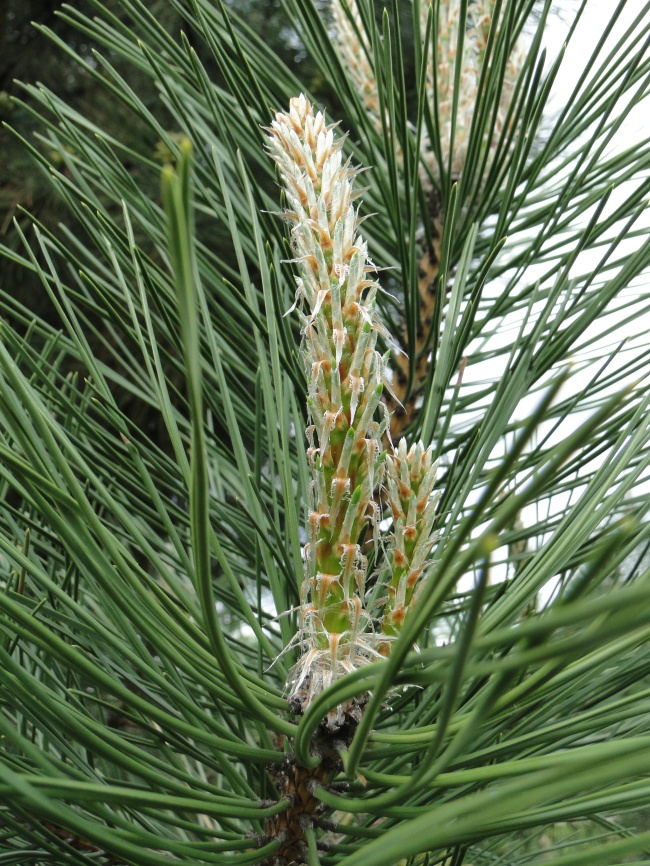
New needles emerging out of a winter bud next to last year’s stem (somewhat orange colored)

A stem (a few years old, noticeable by its unique appearance) with older needles on it (anywhere from 2-5 years old)

A loose female cone which had fully opened before but mostly closed due to recent rain
A decent sized P. nigra (around 6 meters (20 feet) tall

New male strobili (cones) occur in clusters at the end of branches
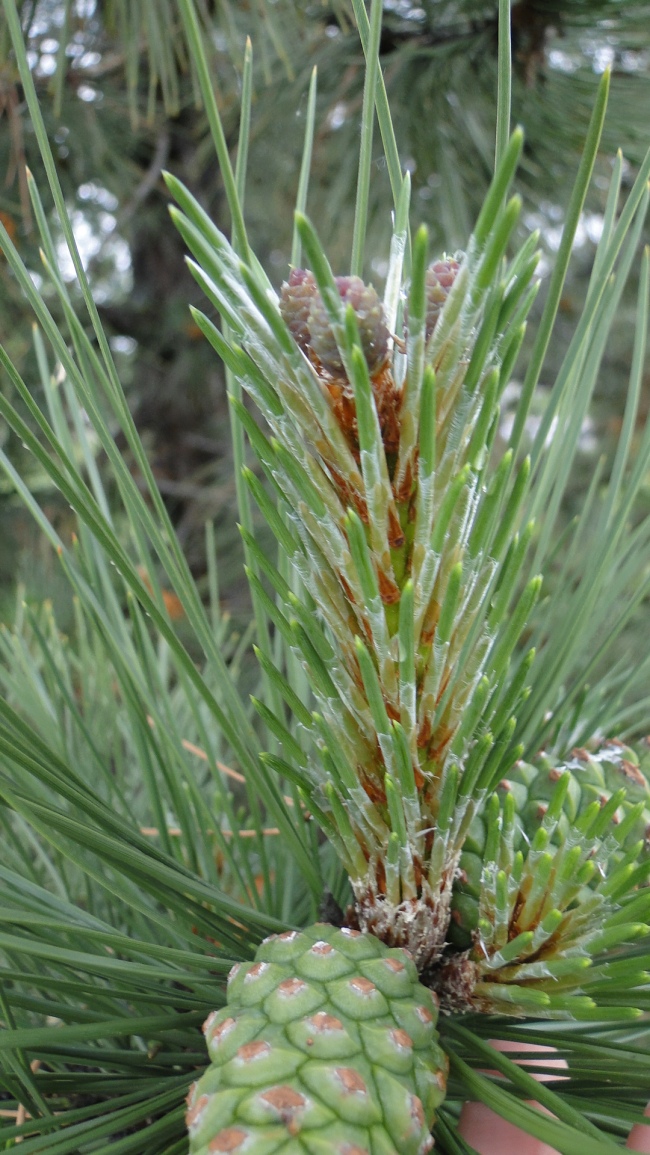
New needls emerging from winter buds
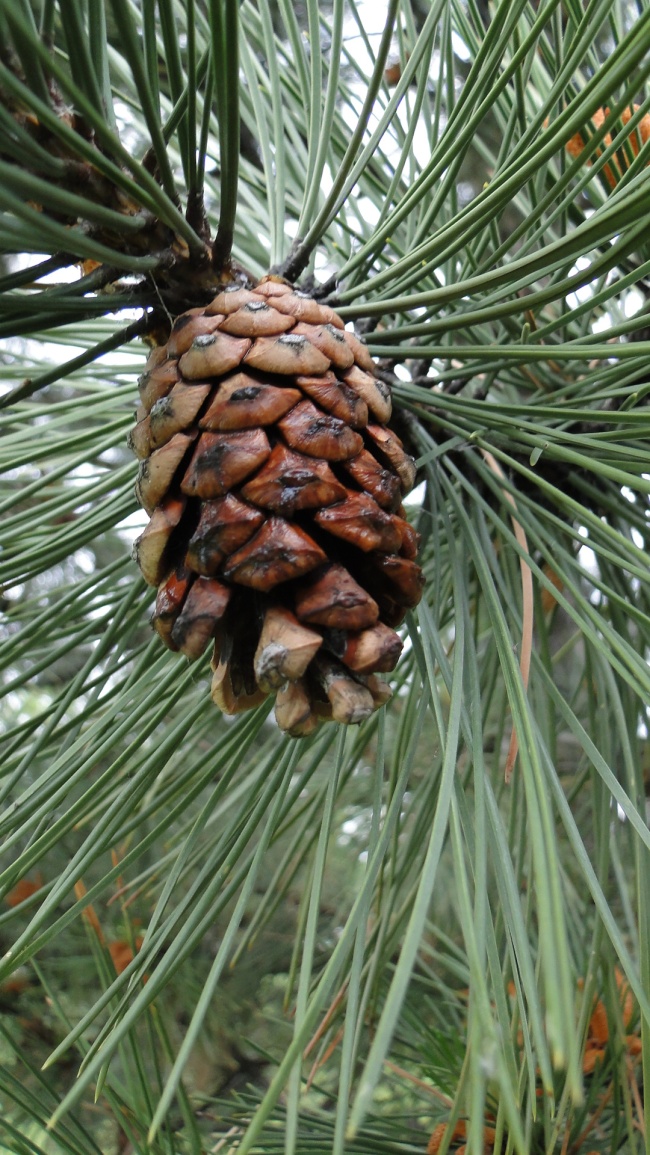
An opened, mature female cone alongside older foliage
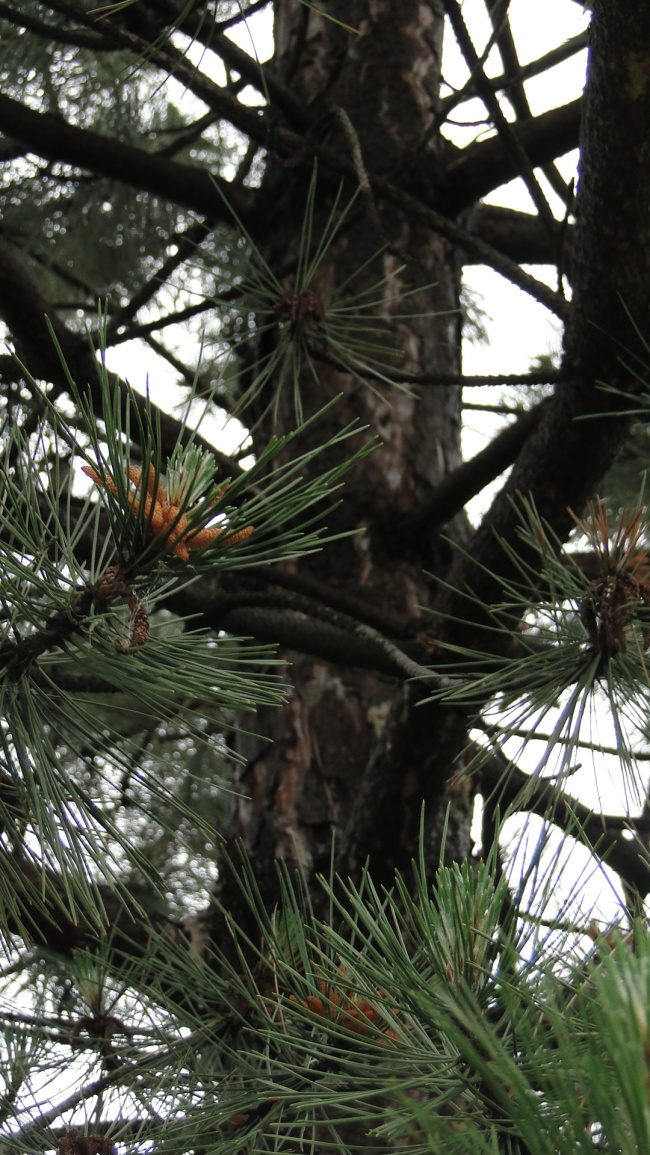
The dark-brown bark (note: appears darker than normal due to recent rain)
A fairly young specimen, less than 6 meters (20 feet) tall

New needles emerging from a winter bud
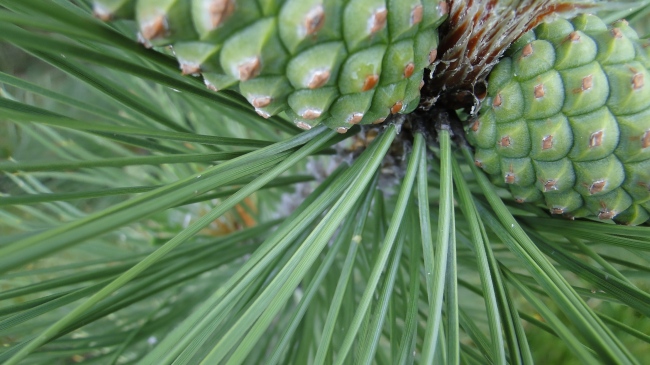
Two needles per peg (and some of the winter bud) are visible here
An older specimen with the flat, umbrella-shaped canopy visible (estimated to be around 15 meters (50 feet) tall)
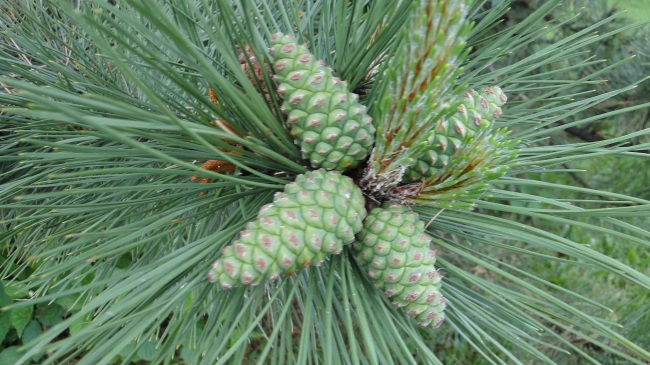
Several maturing female strobili (cones)
All of the images provided were taken by me. They may be used for educational/informational purposes only, provided that this article/online journal is appropriately cited/referenced first.
